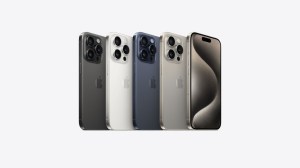- India
- International
Google I/O 2017: Android O, Android Go, Google Assistant on iOS, and more
Google I/O 2017's opening keynote saw a major focus on Google Assistant, machine learning, Android Go and more
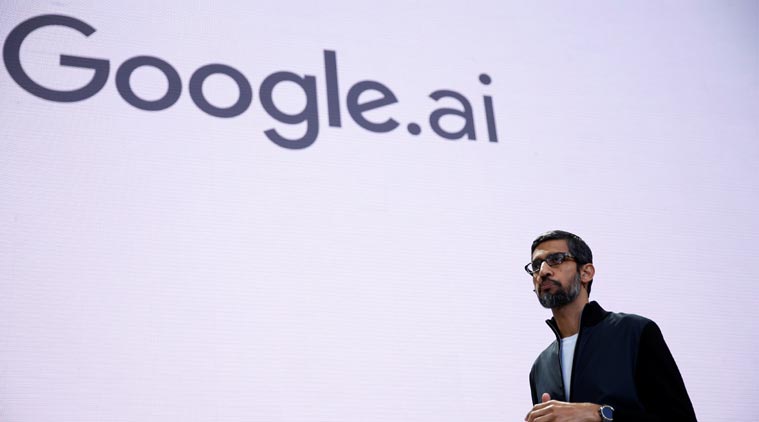 Google I/O 2017: Google CEO Sundar Pichai spoke about AI, Machine learning, and how the search giant was focusing on these areas. (Image source: Reuters)
Google I/O 2017: Google CEO Sundar Pichai spoke about AI, Machine learning, and how the search giant was focusing on these areas. (Image source: Reuters)
Google I/O 2017’s opening keynote is over with major announcements around the company’s core services and products. The emphasis in this keynote was on machine learning and artificial intelligence, which will drive most of its products be it Android or Google Photos.
An update on Android O was followed by news of Android Go, which is the company’s new project to power low-end smartphones with the latest version of Android. Google Assistant will be coming to the iPhone, while the Google Home Speaker got a major upgrade. Google Photos now has some new features as well.
Here’s a quick look at Google’s top announcements from the I/O 2017 keynote.
Android O Beta
Google announced the Android O beta preview is now ready for download. Android O offers what Google calls a more ‘Fluid experience’ with features like ‘Picture in Picture (PIP), where users can just swipe a video down to the bottom of their screen and continuing opening other apps. It also gives users more control over their notifications.
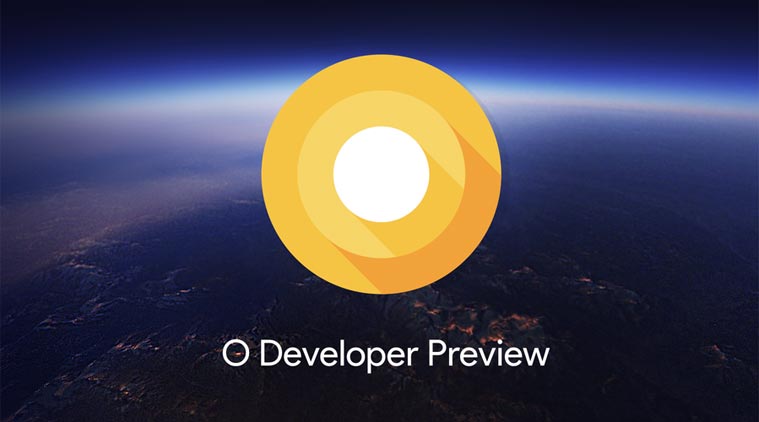 Google announced the Android O beta preview will be available to download for all users.
Google announced the Android O beta preview will be available to download for all users.
Android O is also promising battery improvements, and will ensure more controls over how background apps use power. The new version of Android also has a nifty feature called “Smart Text Selection”, which relies on machine learning to recognise an address or a phone number on the screen. A user can easily select this whole text with a double tap. As Google showed in the demo, a double tap can also give the option to open Maps if you are selecting an address.

Additionally for developers, Android will now start supporting Kotlin programming language, along with Java language and C++.
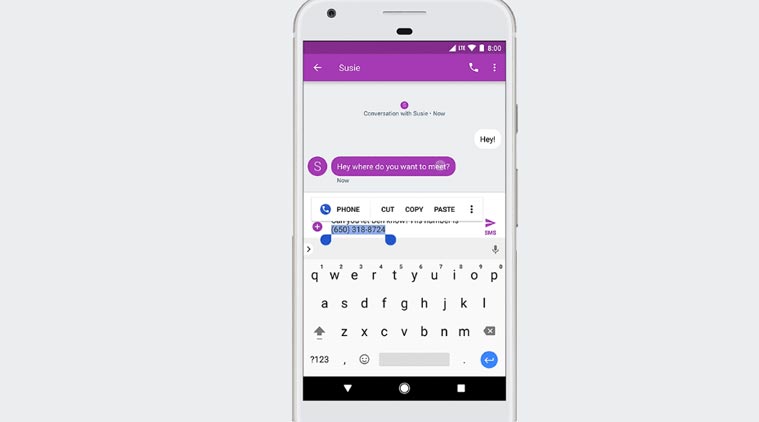 Android O will also bring “Smart Text Selection”, which relies on machine learning to recognise an address or phone number, and give a relevant option.
Android O will also bring “Smart Text Selection”, which relies on machine learning to recognise an address or phone number, and give a relevant option.
The other big news was Android Go, which is a version of Android optimized for entry-level devices. While Google says these devices will be available by 2018, the idea is to have Google apps which use less memory, data, as well as storage. Google Play Store in the Android Go version will show those apps which can load quickly on these phones. Data saver will be an in-built feature of Android Go.
Essentially Android Go will have specific apps like YouTube Go, Chrome and Gboard “to use less memory, storage space and mobile data,” says the company. Even phones with 1GB or 512MB RAM will be able to provide a seamless experience to users on these devices, and yes they will run Android O.
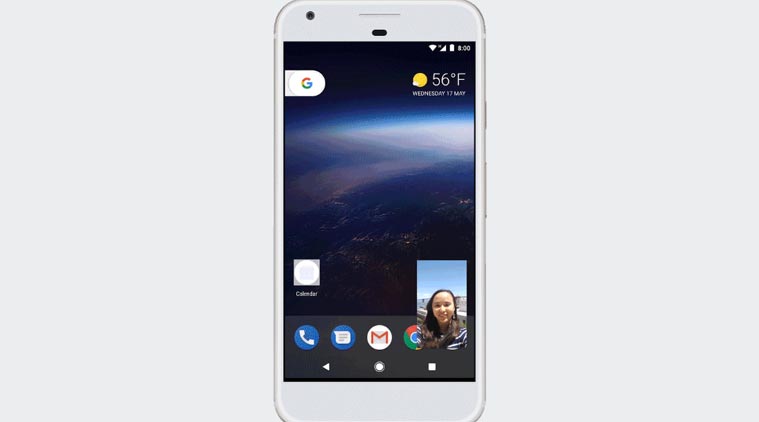 Picture in Picture is another important feature of Google Android O.
Picture in Picture is another important feature of Google Android O.
Google Play Protect
Google also spoke about Android security, and how Play Protect, will ensure more all round security for devices. Play Protect will update on its own, and will take actions to keep a user’s device safe.
Google also says they are relying on their machine learning systems to detect new risks. Also ‘Find My Device’ is now being added as a part of Google Play Protect. This is a feature that Android has supported for sometime now.
Google Assistant
Machine learning was the highlight of Google’s Keynote, and so it was not surprising to see the company talk about updates to the Google Assistant. First up, Google Assistant is coming to the iPhone as a standalone app, so Siri will have some new competition. The Assistant is available on iOS version 9.1+ and above.
 Google Assistant is coming to iOS.
Google Assistant is coming to iOS.
Google added some new features to Assistant, which includes the ability to schedule calendar appointments, and set reminders. Google Assistant will also start supporting third-party app actions, and developers can build “conversational apps” for this on phones as well.
Till now this support was limited to Google Home speaker, but it looks like Google will extend this to smartphones as well, which was expected. For example, you will soon be able to speak to Google Assistant on your phone, and ask it to book an Uber.
Google Assistant will also be making it way to television sets via Chromecast. Google plans to add this later in 2017. To give an example, if you ask Google Assistant to play YouTube videos, and the phone is connected to the TV with Chromecast, these videos will be cast straight on the big screen itself.
Google Home Speaker
Google Home Speaker, which is powered by the Assistant, also saw some new upgrades. The biggest is the support for hands-free voice calling. This will be coming to the US in the coming months. Users can also connect their mobile number with the Home speaker.
Google Home Speaker now also has ‘proactive voice assistance,’ which means the Assistant will remind you of somethings without the user having to ask for its specifically. For instance, the Assistant on Home speaker could figure out when the user has an appointment, and remind them of traffic conditions before they leave the house.
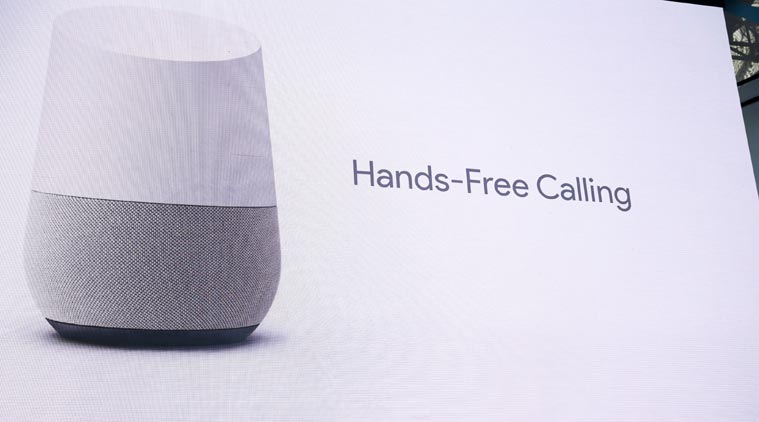 Google Home Speaker, which is powered by the Assistant also saw some new upgrades. (Source: Reuters)
Google Home Speaker, which is powered by the Assistant also saw some new upgrades. (Source: Reuters)
Home Speaker also gets Bluetooth support, so users can play any audio Android, iOS devices. Google will also let users type in their requests to the Assistant on phones soon. The company will soon add search history to highlight previous searches which are made to the Assistant.
Google says the Home Speaker will now be sold in more countries including, UK, Australia, Canada, France, Germany and Japan. It will also support more languages on eligible Android phones and the list includes Brazilian Portuguese, French, German and Japanese, as well as Italian, Korean and Spanish by the end of 2017.
Google is also partnering with more than seventy smart home partners to bring support for the Google Assistant to other devices.
Google Photos
Google Photos now has three new features . First, Google Photos will now tell you when to share some group photos, and yes it is relying on machine learning to do this. It will even suggest with whom you should share these photos.
When you share an album with your friends or colleagues, it will also give them a reminder to share their photos from the same event.
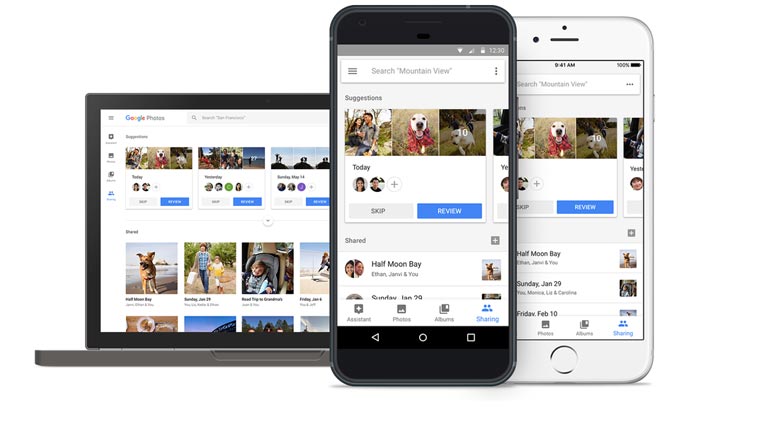 Google Photos has three features, including the ability to share the entire library.
Google Photos has three features, including the ability to share the entire library.
Google Photos will have a new Sharing tab, where these suggestions will be visible, and it will roll out on Android, iOS and the web over the coming weeks.
Google is also adding Shared Libraries, where you can share your entire library with your spouse, partner or best friend. This way everyone has all the photos, and nobody feels left out.
Finally Google also rolled out Photo Books, though this is for US users. It will let people print out hard copies of their photos from a trip or wedding or anything else. Google Photos will find the best shots, eliminate duplicates, and poor quality images, and automatically layout this book for you. This will start at $9.99 for a 20-page softcover book, and $19.99 for a hardcover book. Google says it will bring this option to more countries.
Smart Reply in Gmail on iOS, Android
Google is adding Smart Reply feature from Inbox to the regular Gmail app. It will show automated smart replies, you can either go with these or edit the response to an email. Of course, this relies on machine learning, and will figure out your pattern over time, if you use it a lot more. It will roll out globally on Android and iOS in English first, with Spanish next.
Google Machine Learning and TPUs
Google CEO Sundar Pichai also announced the company’s second-generation Tensor Processing Units (TPUs). These will be coming to Google Cloud, and initially be available via Google Compute Engine.
Pichai spoke about how they’ve created new models of TPUs, where the machine is training itself, and also running other machine learning models.
 Cloud TPUs are custom-built for machine learning; 64 of these devices can be networked into a TPU pod, an 11.5 petaflop ML supercomputer.
Cloud TPUs are custom-built for machine learning; 64 of these devices can be networked into a TPU pod, an 11.5 petaflop ML supercomputer.
Pichai spoke about how the computing world is shifting from “mobile-first to an AI-first world.” The new TPUs from Google can do both “inference and training,” and process a lot more information. He also spoke about AutoML, where neural nets are designing other neural nets.
A lot of this machine learning advance comes with major real world consequences. For instance, Google has built tools to help pathologists diagnose diseases better, and detect cancer more accurately.
“We’ve used ML to improve the algorithm that detects the spread of breast cancer to adjacent lymph nodes. We’ve also seen AI make strides in the time and accuracy with which researchers can guess the properties of molecules and even sequence the human genome,” wrote Pichai in the company’s blogpost.
Google Lens
Google Lens is a new set of vision-based computing capabilities. It will be part of the Google Photos app in the future as well and the Assistant. Essentially you can point Google Lens at an object and it will understand what that represents. It could be a WiFi password, which the phone will be able to recognise and thus help a user log in immediately.
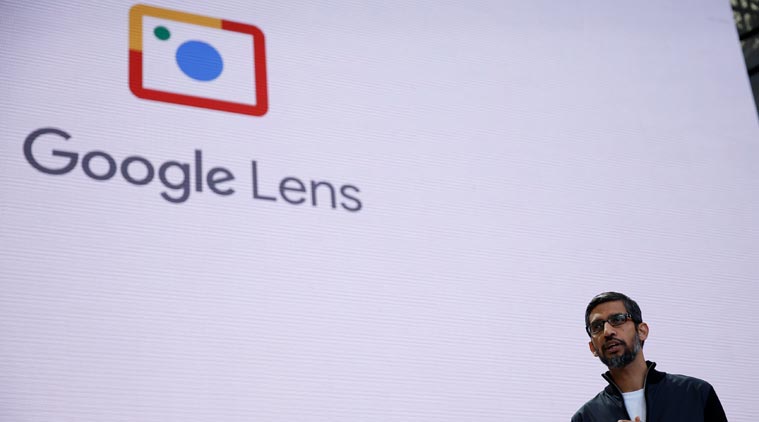 Google Lens will let smartphone cameras identify and understand an object. (Source: Reuters)
Google Lens will let smartphone cameras identify and understand an object. (Source: Reuters)
Google Jobs
Google has build a new Jobs feature in search, which will show results around job search. This will be available in the US right now. It will show search results for jobs based on experience, salaries, titles, etc.
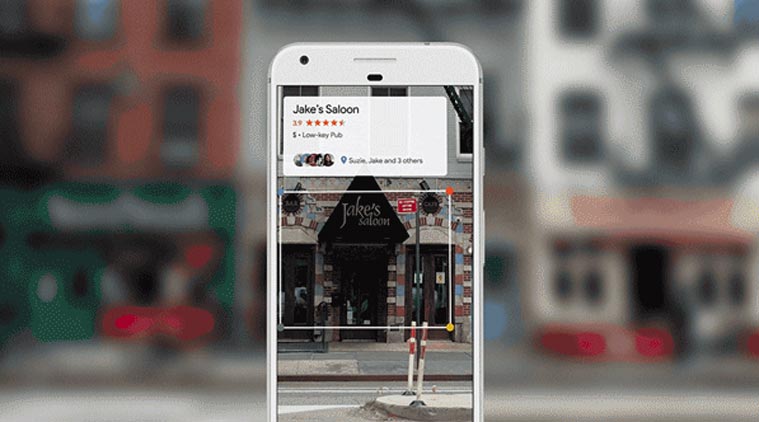 Here’s another example of how Google Lens will work.
Here’s another example of how Google Lens will work.
Virtual reality, Augmented Reality
Google announced that Galaxy S8 , S8+ and LG’s future flagship will be Daydream-ready. S8 series will get a software update this summer for DayDream.
DayDream will also have its own standalone VR headsets with no PC or smartphone required. They have a headset tracking technology called WorldSense, which allows positional tracking so the headset knows exactly where you are moving. Google says no external sensors are required for this.
The company is also working with Qualcomm to create a standalone headset reference design. HTC VIVE and Lenovo will be working on these devices as well.
Google also gave an update on Project Tango, and that Zenfone AR will be launching this summer.
More Tech
Best of Express
Apr 18: Latest News
- 01
- 02
- 03
- 04
- 05



































